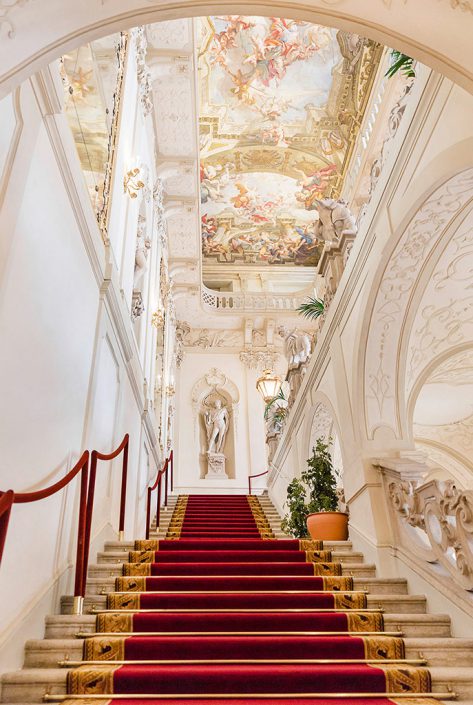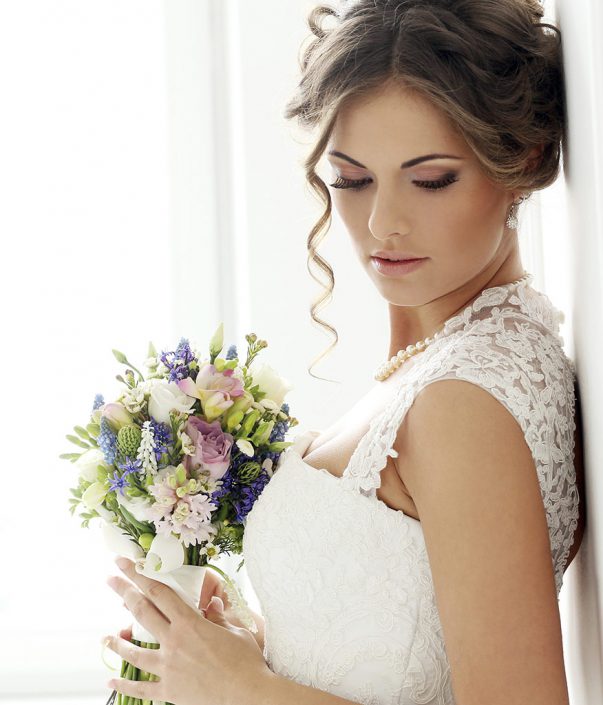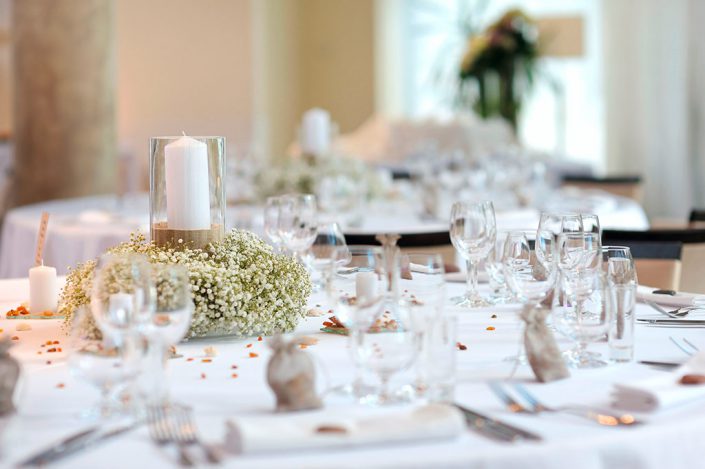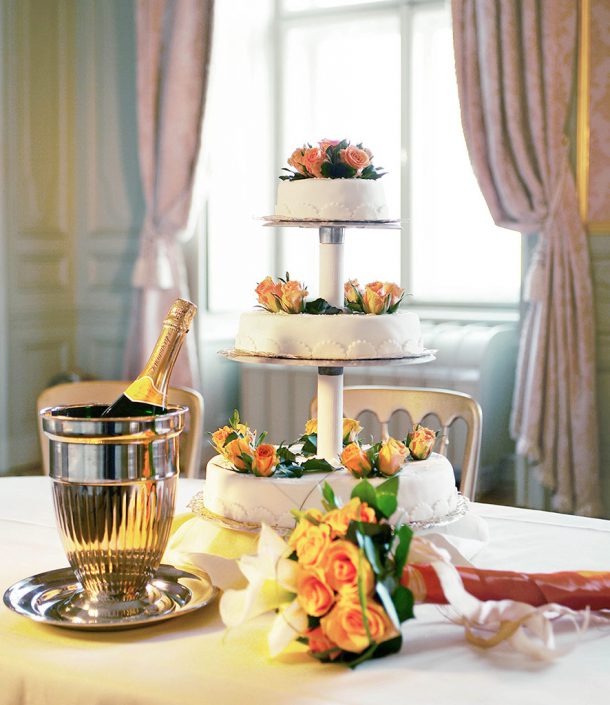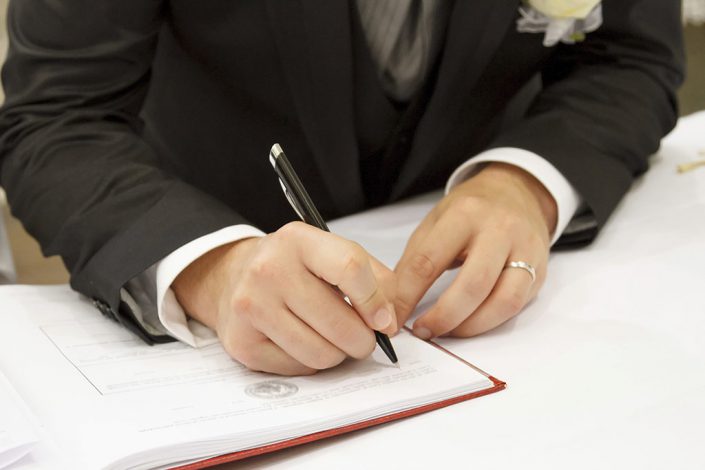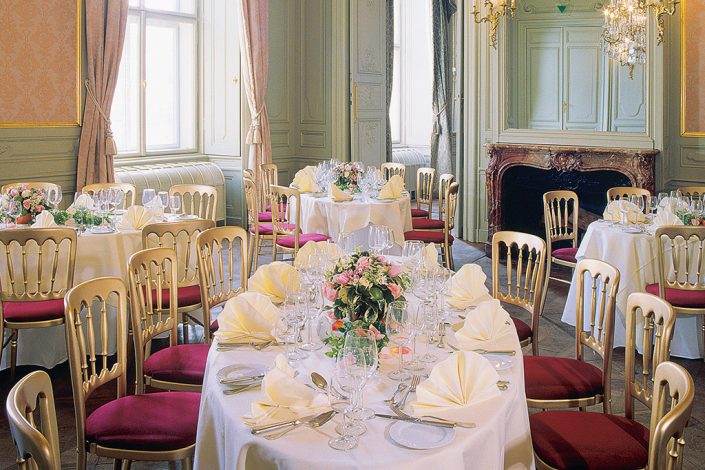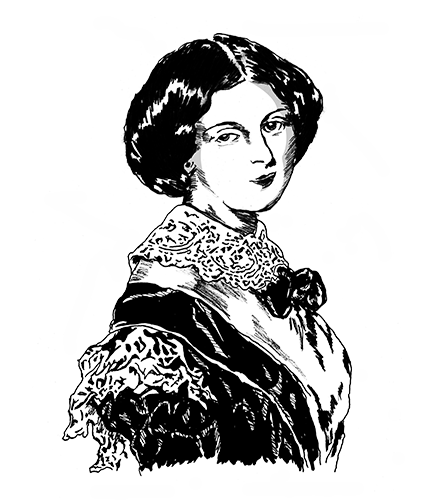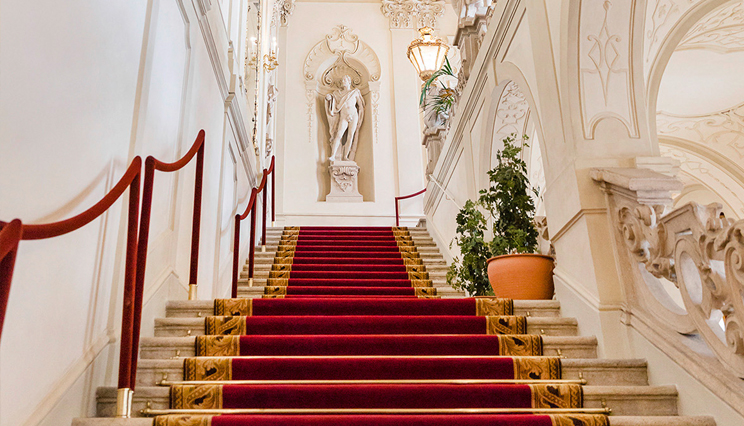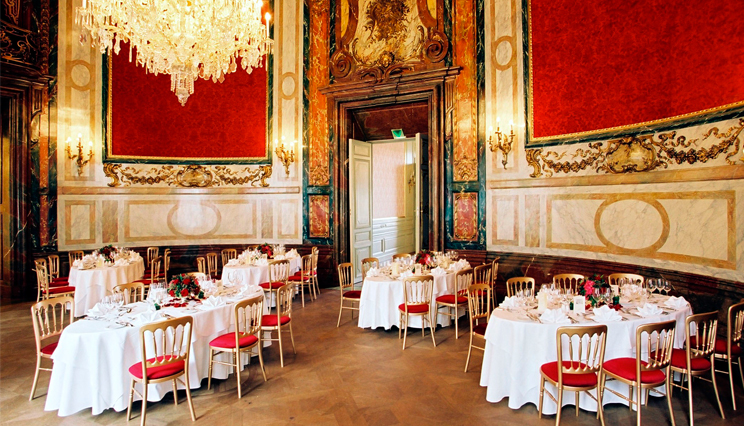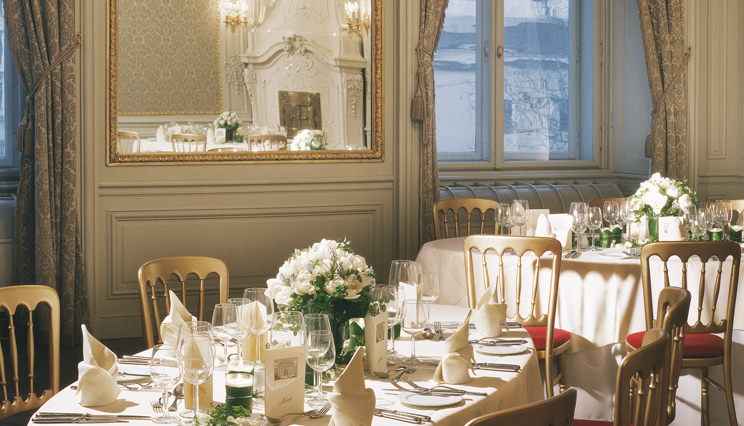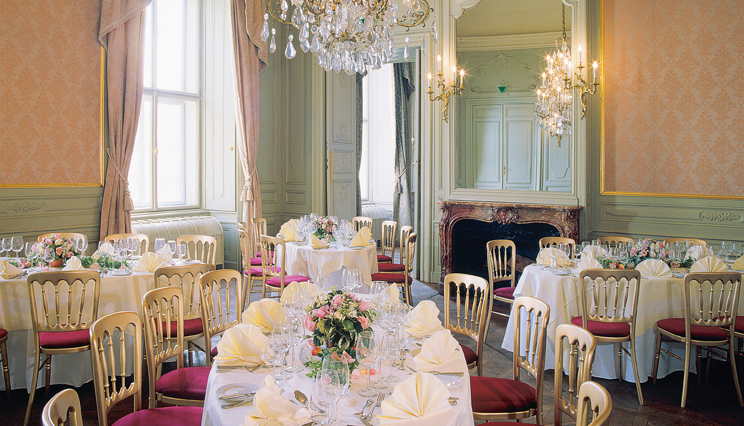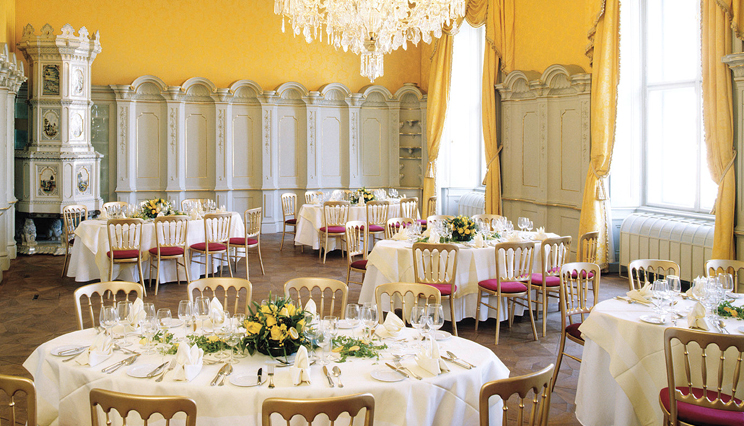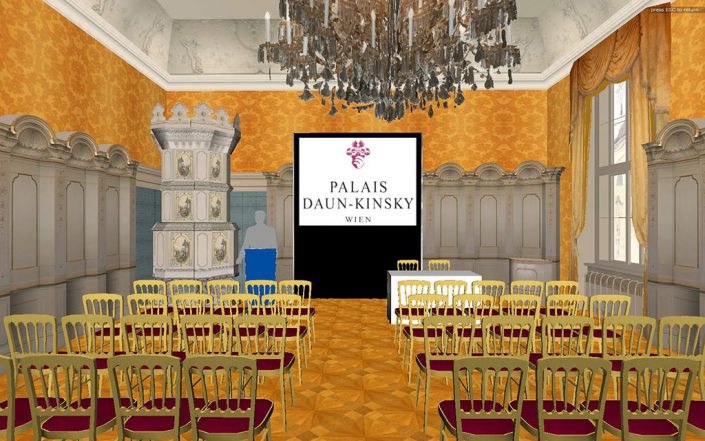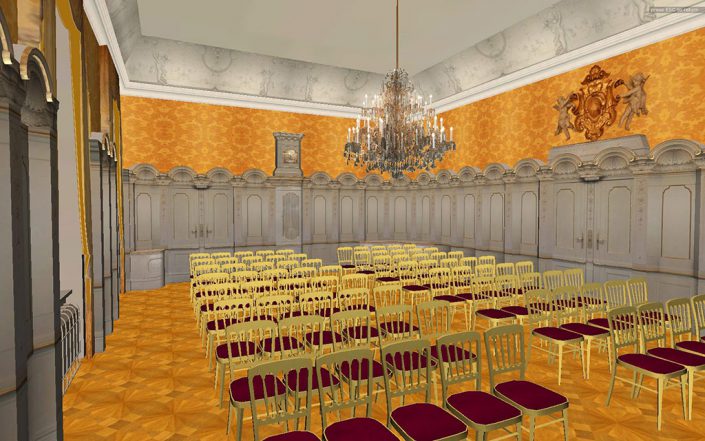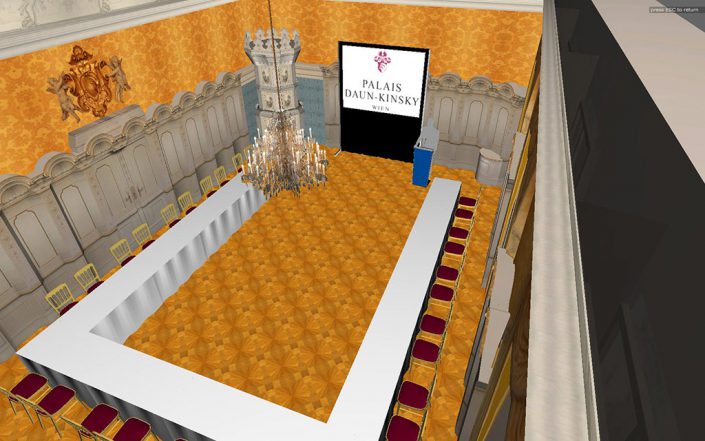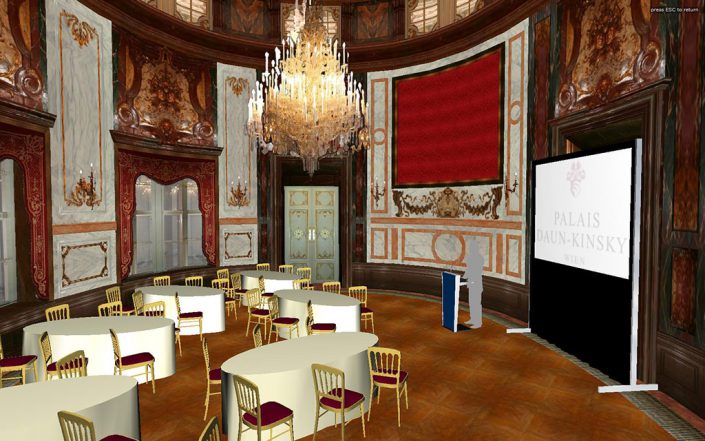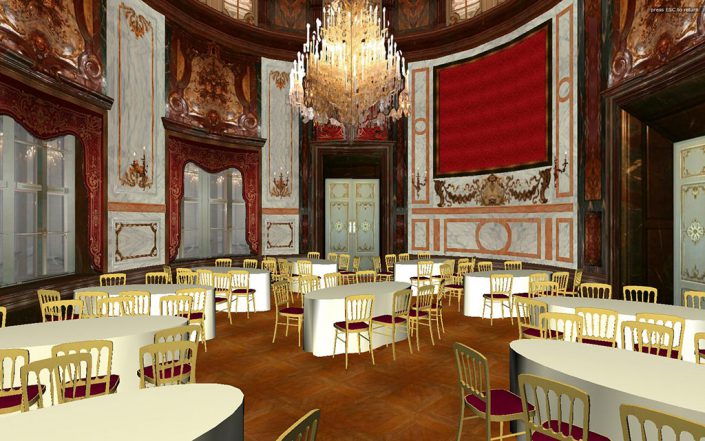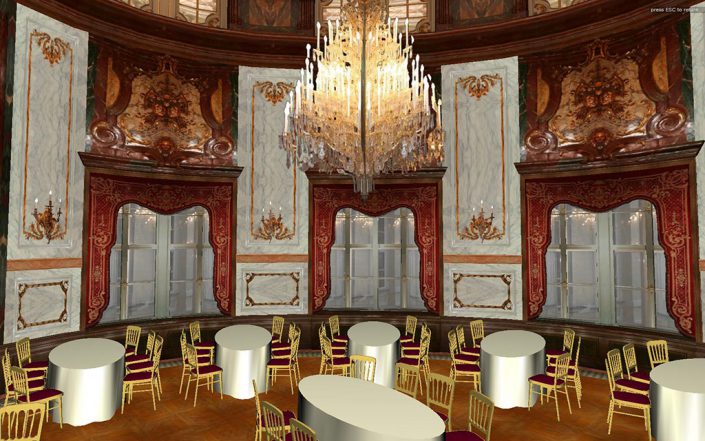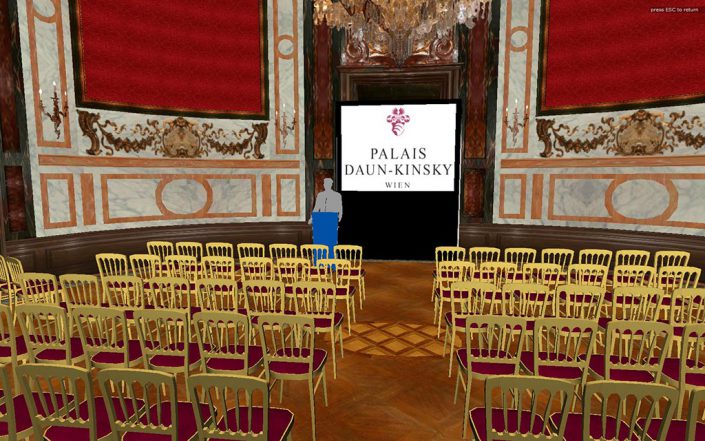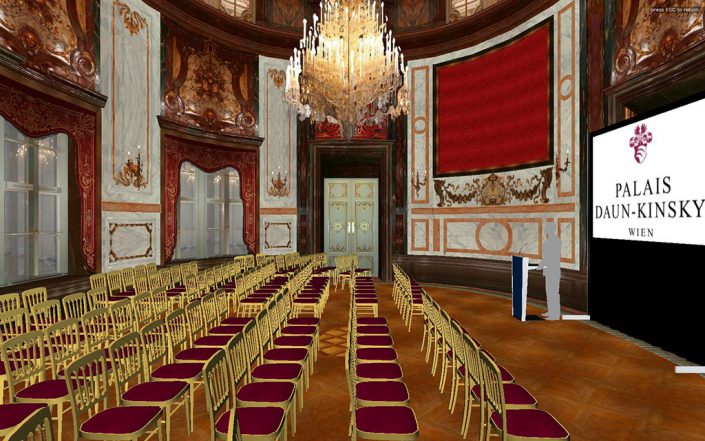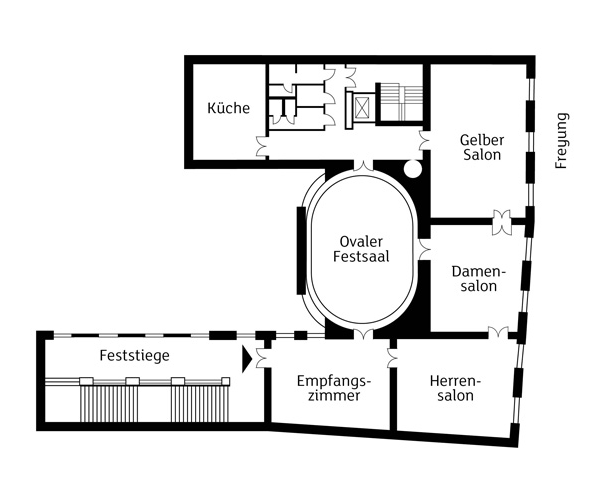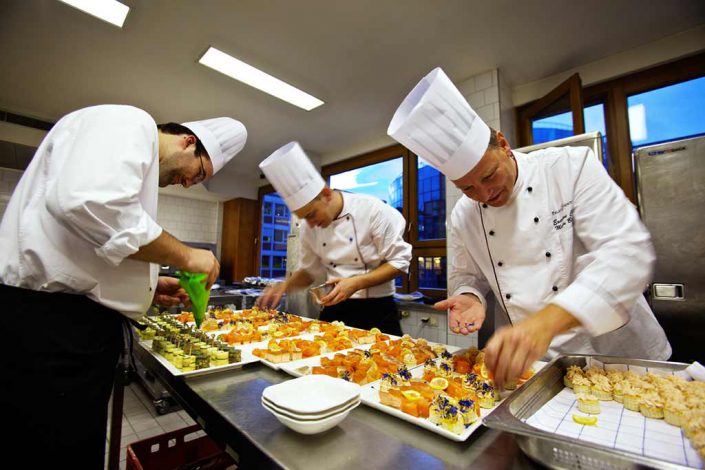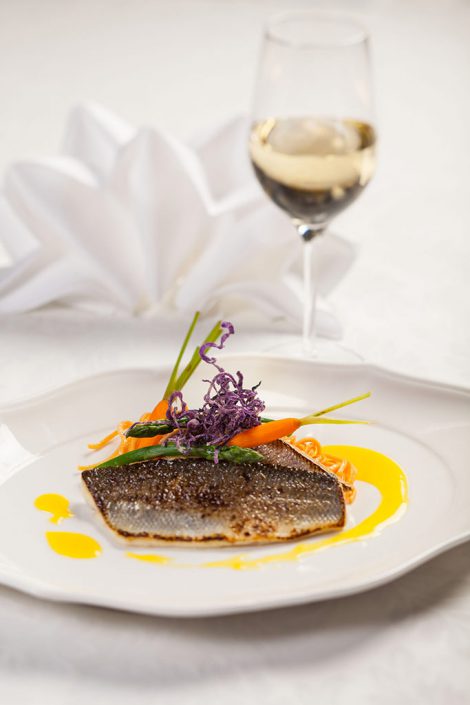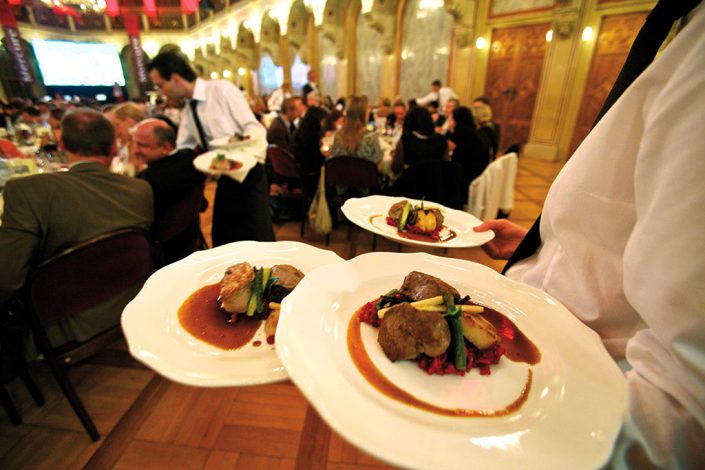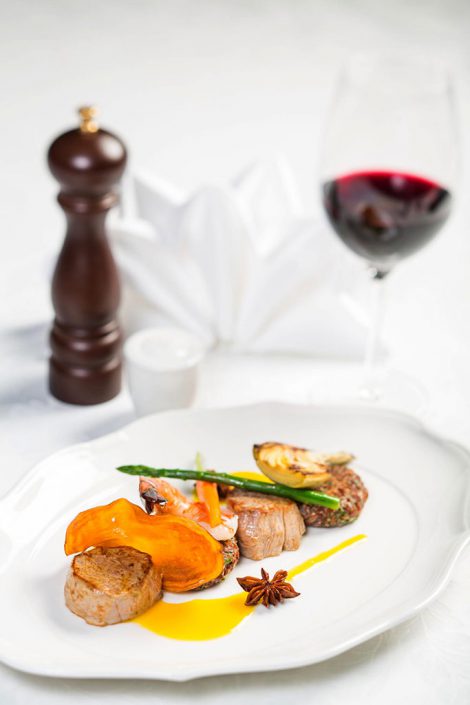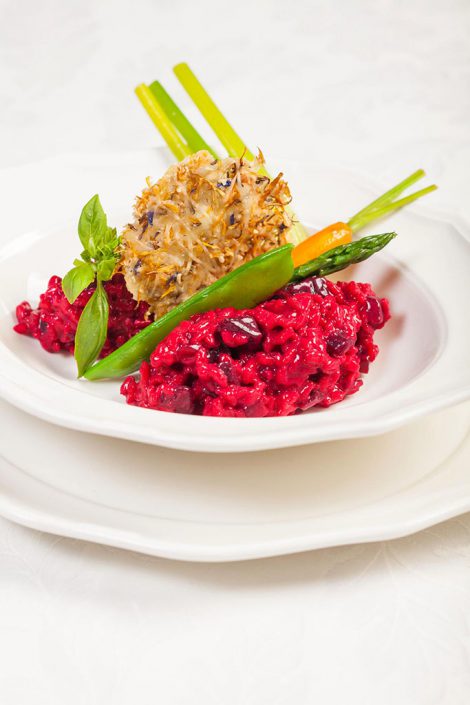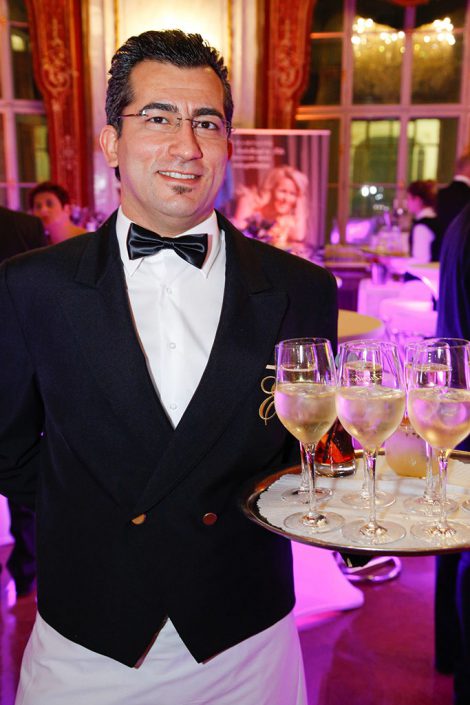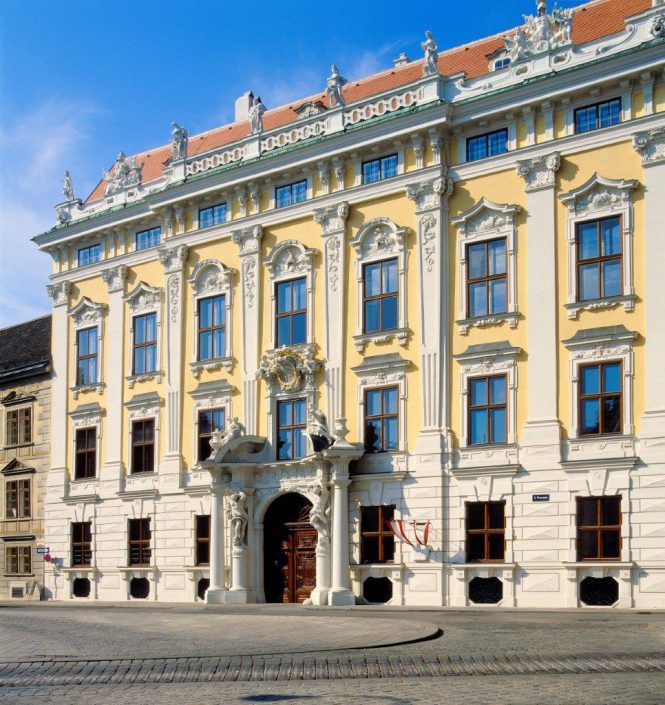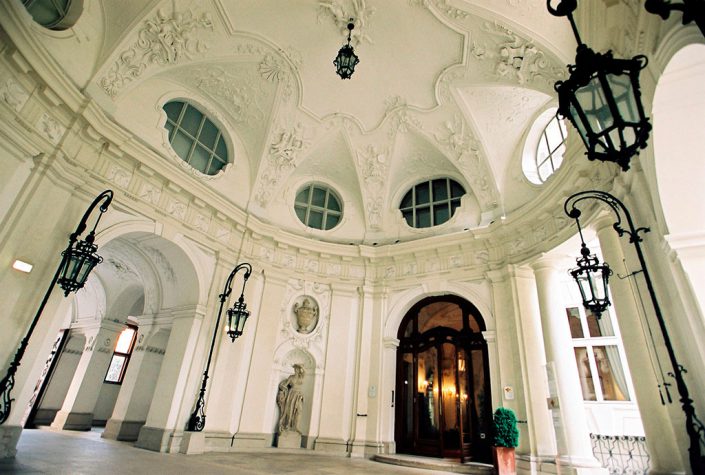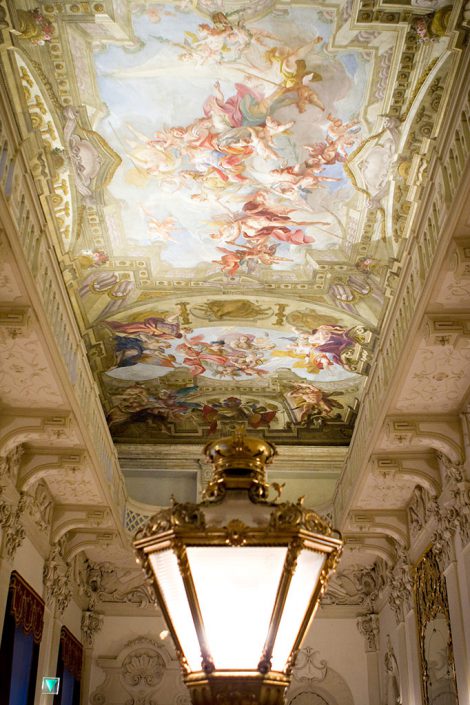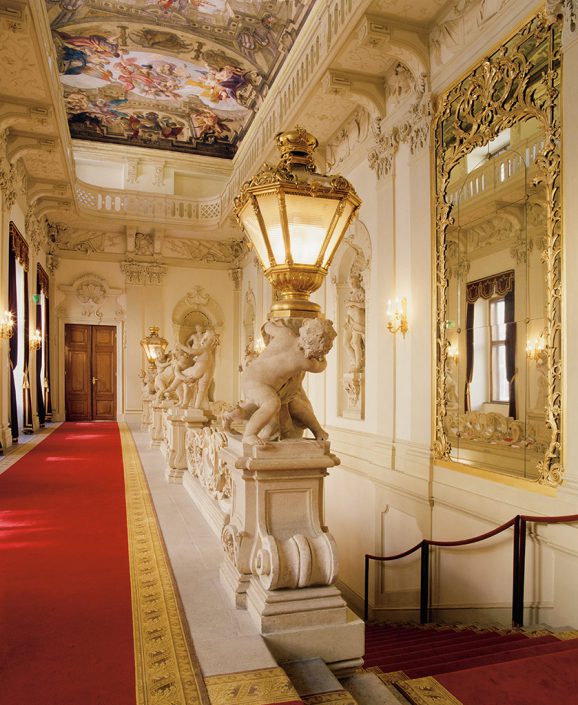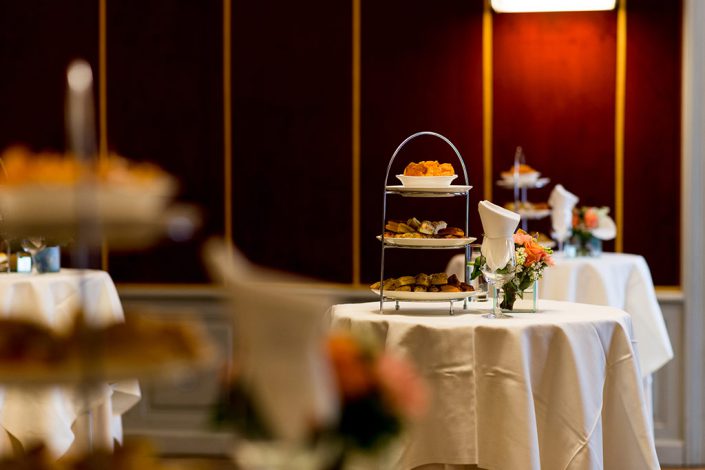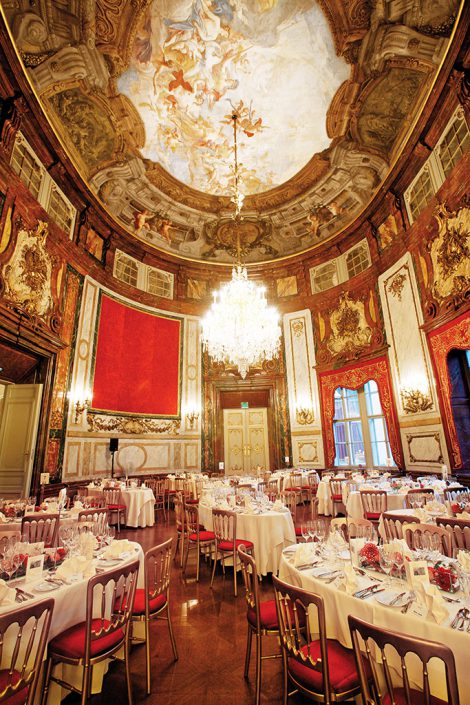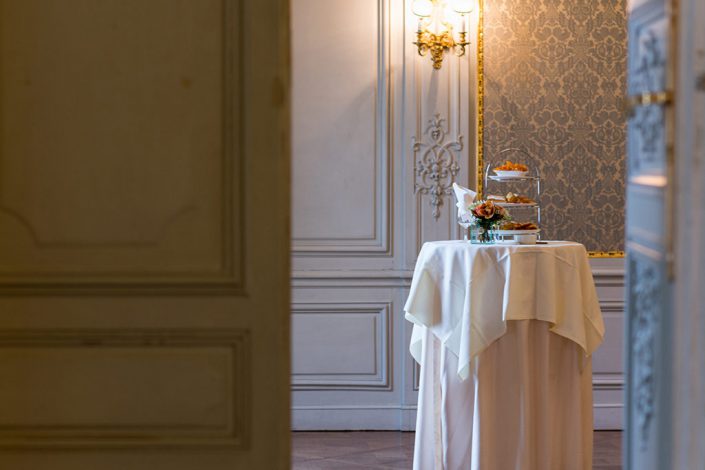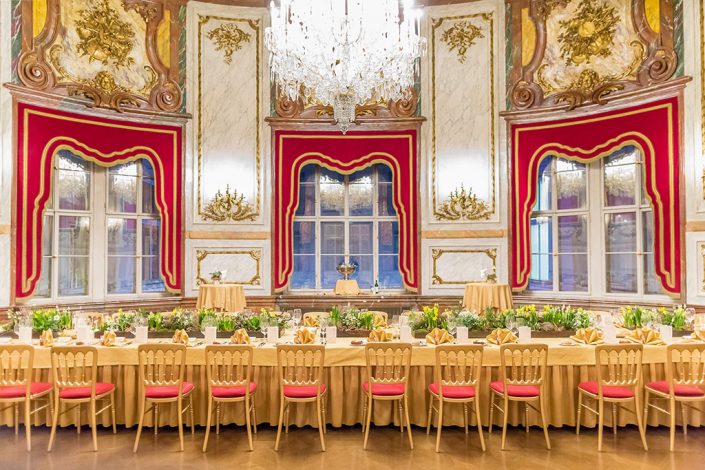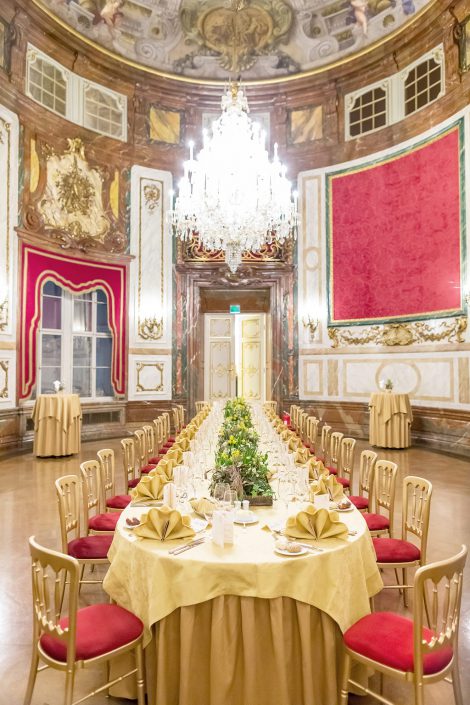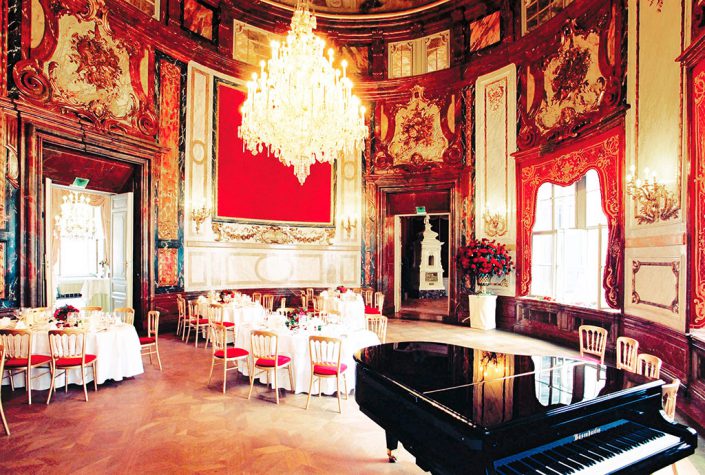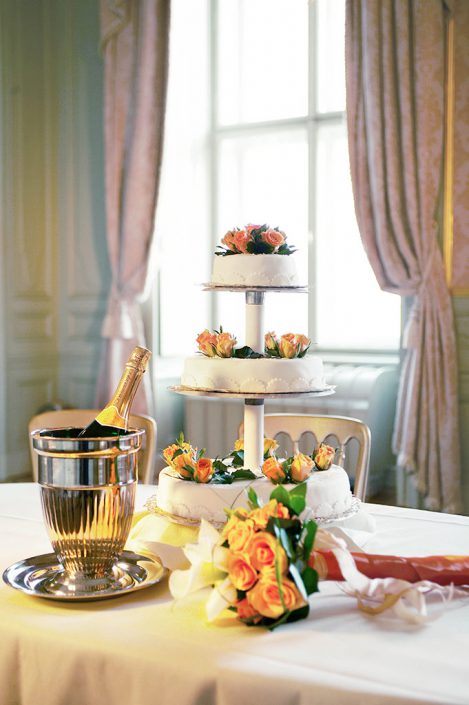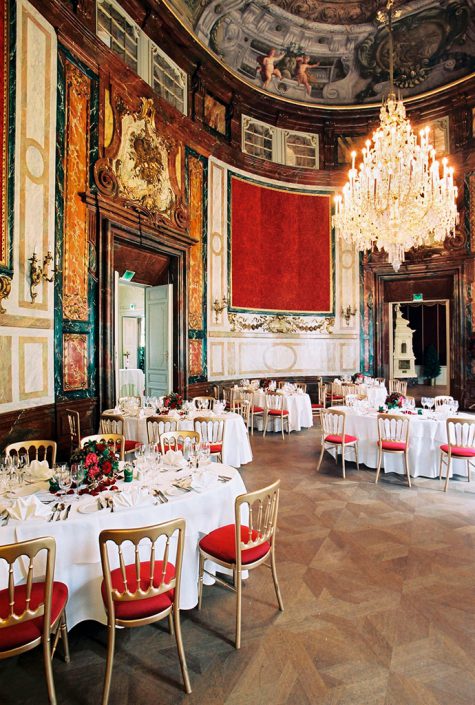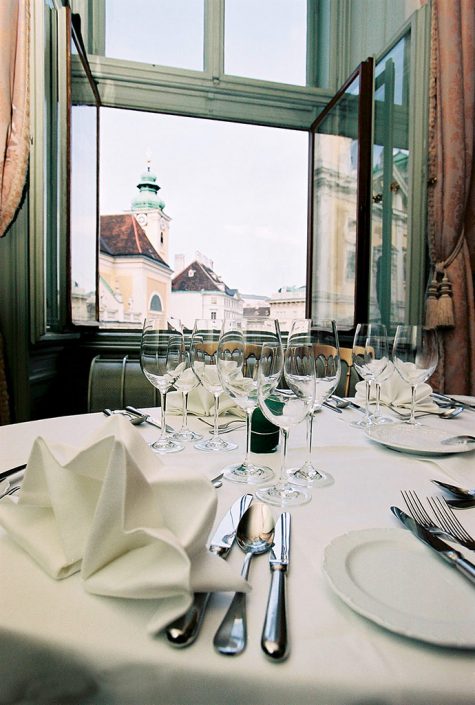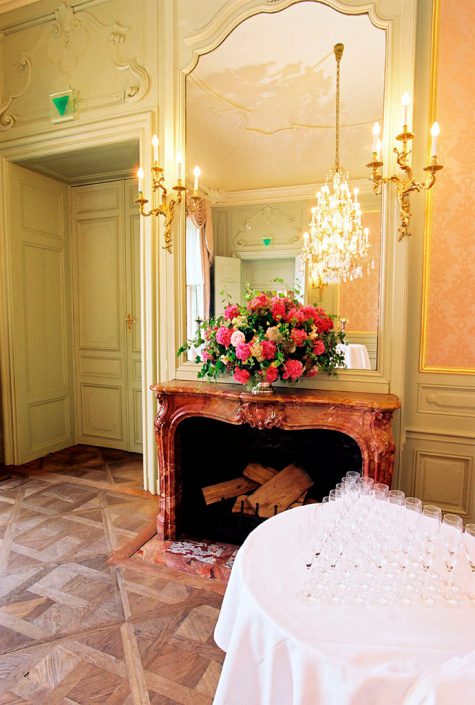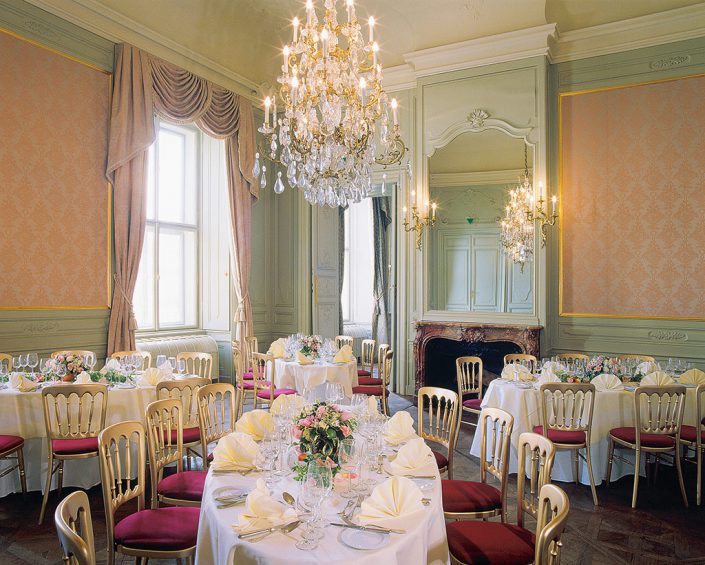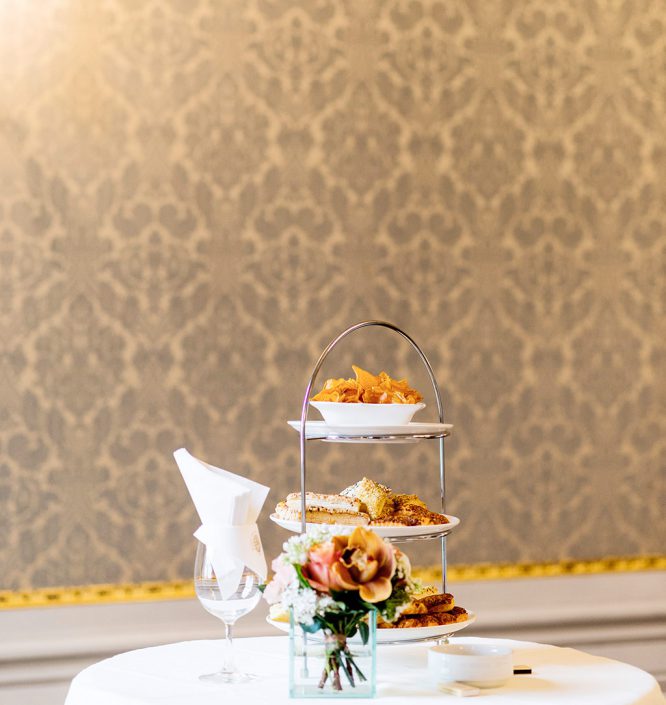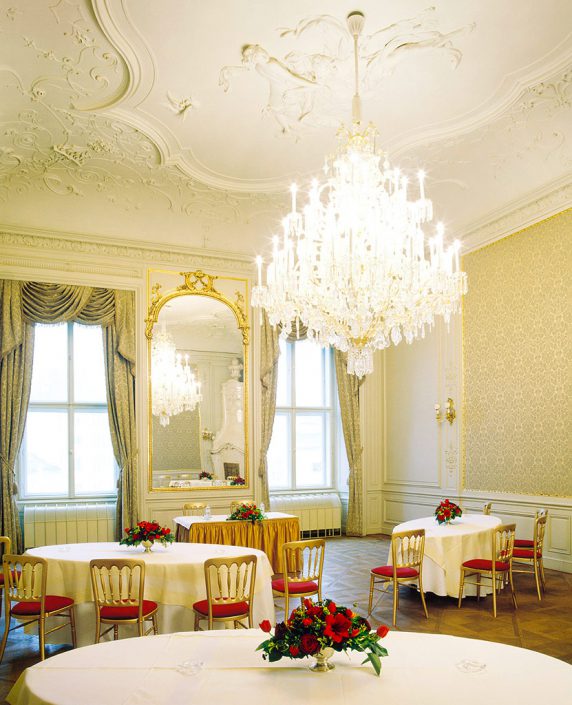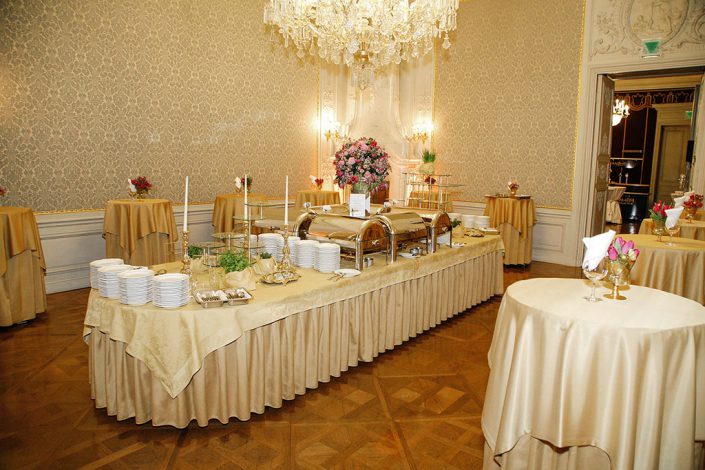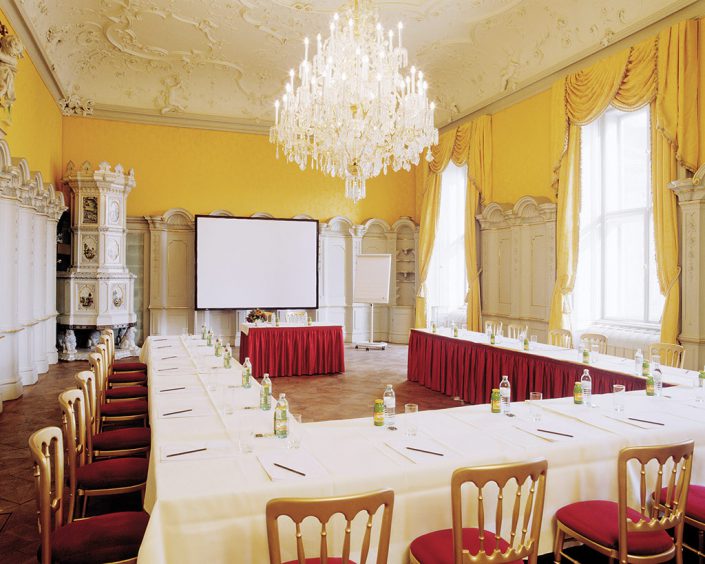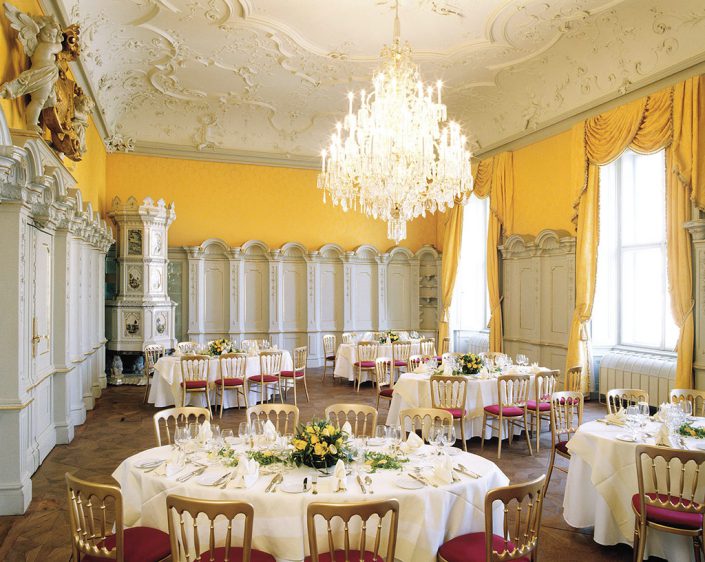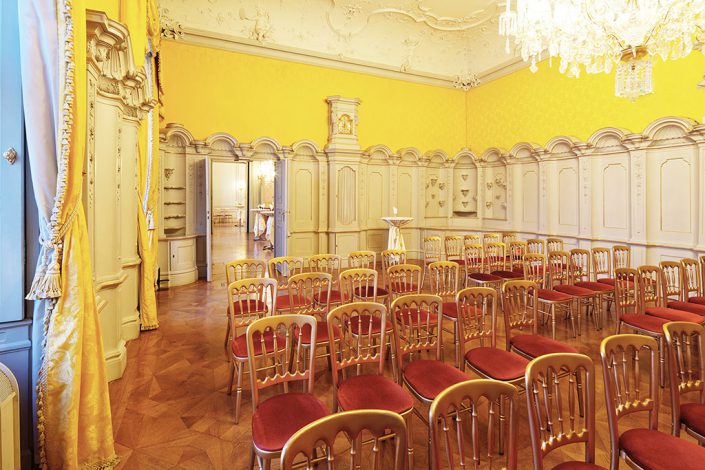Celebrate in Vienna’s most elegant address
But don’t say just Kinsky to him, whatever you do.
The palace is in fact named Daun-Kinsky, after the man that commissioned it: Field Marshal Count Wirich Philipp Laurenz Graf von und zu Daun. He had this opulent Baroque palace built between 1713 and 1719 by renowned master architect Lukas von Hildebrandt. Inside, it features eye-catching stucco work by Alberto Camesina and breathtaking frescoes by Carlo Innocenzo Carlone and Marcantonio Chiarini.
Palais Daun-Kinsky is Vienna’s most elegant address for opulent functions and parties. Weddings, christenings, birthdays, award ceremonies, conferences and glittering events all call for the kind of impressive architecture that matches the occasion. In the heart of Vienna, in the Freyung quarter. With uninterrupted views of the Schottenkirche church.
Capacities
20 – 180 people
Construction style
Baroque
| Ovaler Festsaal | 88 | 80 | 110 |
| Herrensalon | 40 | 40 | 56 |
| Damensalon | 32 | 30 | 40 |
| Gelber Salon | 32 | 30 | 80 |
| Empfangszimmer | – | 40 | – |
Business & pleasure
Meetings fit for a count
Count Wirich Philipp von und zu Daun, Prince of Thiano was a political and commercial force to be reckoned with in the Austria of old. Meetings and negotiations conducted in his ‘humble’ abode are automatically steeped with a sense of the historic. Ideal for exclusive presentations, confidential negotiations, press discussions and business breakfasts.
Celebrate surrounded by Baroque majesty
Daun-Kinsky is – you’ll forgive us for repeating ourselves – the jewel in Vienna’s Baroque crown. Guests have the feeling they are floating on air as they glide up the beautiful staircase. The Damensalon is a vision of gentle pink and intricate stucco work. All in all, you would be hard pressed to imagine a better location for a formal gathering, party, gala dinner, cocktail reception or wedding.
Weddings
There is a princess inside every one of us
The bride a vision of silk and lace. Her bridesmaids moved to tears. The groom a bag of nerves. Today is the big day! It’s the greatest day of your life and every single moment should live on in your memory forever.
We will be at your side to provide support and advice every step of the way to ensure that everything runs smoothly – from booking the civil marriage ceremony to arranging decorations, music, technical equipment, champagne reception, premium cuisine from our exclusive in-house caterers and the Café Central pastry kitchen, wedding cakes and anything else that a princess could ever wish for.

Tales from Daun-Kinsky
The Kinskys used to be called Wchinsky. Tired of everyone getting the pronunciation wrong, they simplified the name to Kinsky.
State rooms
Meetings and functions with style
Palais Daun-Kinsky not only offers an interesting range of interiors; its stucco work, impressive quadratura frescoes and sculptures are all attractions in their own right.
Grand staircase and Empfangszimmer
This isn’t a place to walk into, it’s a place to make an entrance. Leave your everyday cares behind as you ascend the grand staircase, relax in the opulent reception area and immerse yourself in a world of Baroque splendour – under the watchful eye of Count Daun who is experiencing an apotheosis of his own in the ceiling paintings.
Ovaler Festsaal
Our pièce de résistance. Red marble, gilt stucco and a beautiful ceiling painting by Carlo Carlone. Where else could be better to host a glittering reception, dance a waltz at a wedding reception or present someone with a prestigious award. And the sounds of the violins gently hang in the air, straight from the musical heavens.
Herrensalon
Sometimes men need space for some heavyweight discussions. But in fact, no-one will ever know what’s actually being talked about. Surrounded by understated blue-grey tones, it is the perfect place for a tête-a-tête, fine meal or simply talking about business, life, the universe and everything in between. And it goes without saying that women are welcome despite the name.
Damensalon
Here, gentle pastel shades set the tone. It’s easy to picture the blushing bride in this beautiful environment. A vision of lace, silk and tulle. A prince at her side, a dance, a wedding cake, music. And above it all, fabulous stucco designs from Paul Weyr.
Gelber Salon
Prince Kinsky’s former dining room is the place to eat, drink and celebrate like a member of the nobility. The walls are finished in a vivid yellow, and the wooden panelling was originally used in choir stalls created in Georg Raphael Donner’s workshops. A tiled oven from Nuremberg in the corner adds a particularly welcoming and homely note. Above, cherubs and all manner of cheerful creatures gaze down from the ceiling.

Tales from Daun-Kinsky
The list of names behind the palace interiors reads like a who’s who of the art scene of the time. The imperial court could only dream of commissioning such master craftsmen.
Our Catering
You don’t eat here. You dine!
It wasn’t just the architecture that was opulent during the Baroque period. The dishes served up to blue-blooded dinner guests were heavy, to put it mildly – and not exactly conducive to the wellbeing of our guests today. Which is why our chef de cuisine prefers to focus instead on the latest fineries from the world of nouvelle cuisine.
Perfect organisation and immaculate service from our attentive event catering staff who are there to take care of your – and your guests’ – every whim. For an unforgettable event.
Take a look inside

Tales from Daun-Kinsky
A typical Baroque banquet had at least eight courses. And each course consisted of up to six dishes! 
Directions & Contact
In the heart of Vienna.
Located on the Freyung square, this Baroque gem is directly opposite the Schottenkirche church.
In short walking distance
For organisers and guests
Entrance: Freyung 4, 1010 Vienna
Event entrance by agreement
Pick-up points can also be set up for coaches
Architecture
Barocco, Baroque, Barock.
The word Baroque derives from the Portuguese “barocco” – an irregularly shaped pearl. Baroque pearls.
Palais Daun-Kinsky was built between 1713 and 1719 by Johann Lukas von Hildebrandt – the star architect of the Baroque era. The Austrian aristocracy in particular liked to commission his services to build their ‘modest’ primary residences and second and third homes in a bid to outdo one another and establish themselves as the last word in good taste.
Palais Daun-Kinsky isn’t a place to walk – it is a place for striding. You don’t just climb the stairs – you glide aloft. Guest don’t enter – they make an entrance. All under the watchful eye of Count Daun who is experiencing an apotheosis of his own in the ceiling paintings.
The beautiful decorative stucco work was created by Alberto Camesina, while Carlo Innocenzo Carlone contributed the breathtaking ceiling painting above the grand staircase. The latter also worked with Marcantonio Chiarini on the monumental fresco in the Ovaler Festsaal.
Other well-known buildings by Lukas von Hildebrandt include the Upper Belvedere and Palais Schwarzenberg in Vienna, and Salzburg’s Schloss Mirabell.







